Korean Pronunciation Rules // Tips and Tricks to Pronouncing Korean Correctly
A Guide to Korean Pronunciation Rules
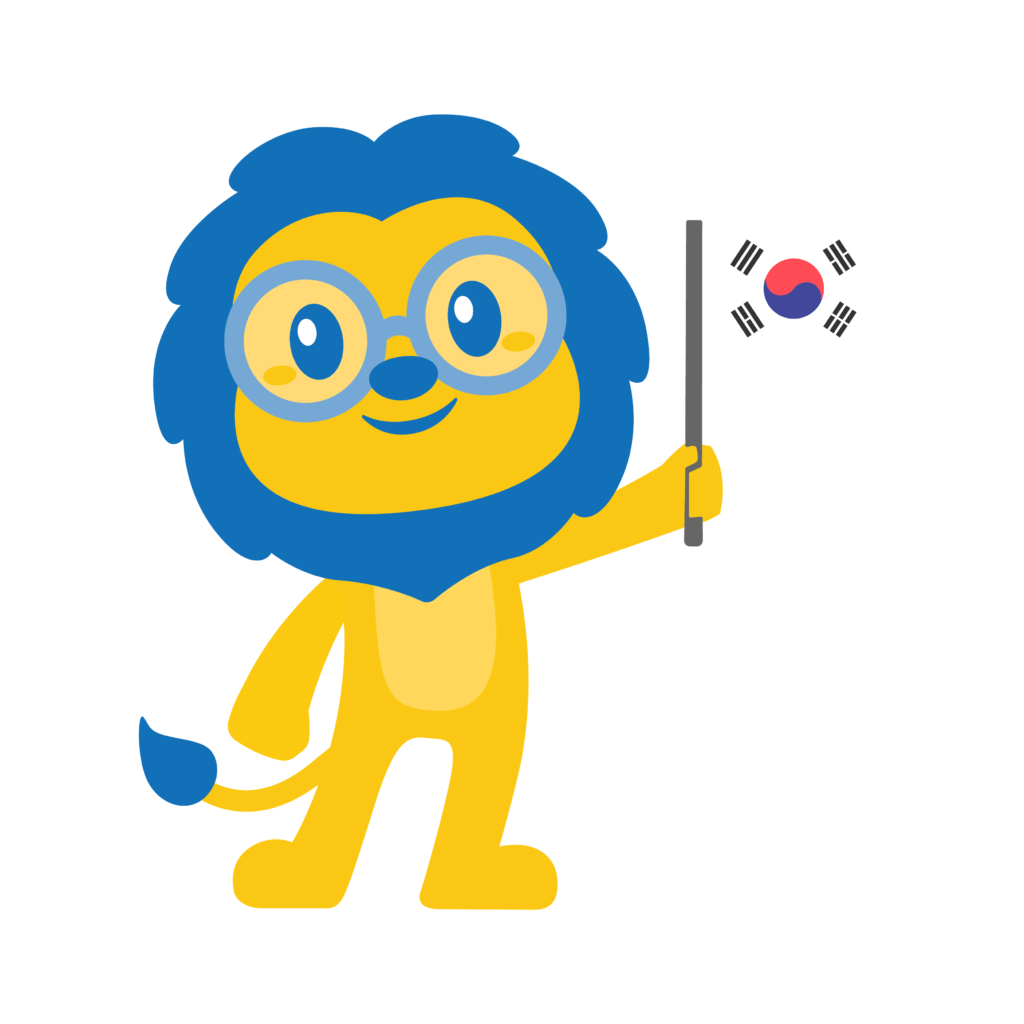
Korean pronunciation is perhaps the most difficult part of learning the language.
You can memorise all the vocabulary and grammar in the world, but it means little if you can’t actually make yourself understood!
For newcomers to the Korean language, pronunciation can be a huge challenge.
Korean has sounds that don’t exist in English, and most new learners have little prior exposure to Korean, so recognizing mistakes and correcting mispronunciation errors can be rather difficult.
Still, it’s crucial to understand basic Korean pronunciation.
Proper speech and diction are highly valued skills within Korea, and it’s important to get it right.
That’s why we’ve compiled a short guide to help beginners get over the most common struggles.
But, first things first!
If you haven’t learned how to read Hangul yet, you should do it right now. This way, you’ll understand the Korean pronunciation rules a lot more easily.

The Korean Alphabet | A Complete and Definitive Guide to Hangul 한글
Learning Korean? Need to understand the Korean Alphabet? This complete guide will tell you everything about the 14 consonant letters and 10 vowels of Hangul
So without any further ado, here are the basic rules for Korean pronunciation.
Korean Pronunciation Rules | Double Vowels
Korean Pronunciation Rules | Double Consonants
Korean Pronunciation Rules | Re-syllabification
Korean Pronunciation Rules | Syllable-Final Closure
Korean Pronunciation Rules | Combination Sounds
Korean Pronunciation Rules | How to get better at Korean pronunciation?
How to Pronounce Korean Double Vowels
Double vowels – also known as diphthongs – are complex vowels that are formed when two basic vowels are combined.
The two basic vowels glide smoothly together to form a new sound.
Examples of double vowels in English are the “oi” in “coin” and the “ea” in “clear.”
Korean has eleven double vowels. They are the following:
- ㅐ (ae)
- ㅔ (e)
- ㅒ (yae)
- ㅖ (ye)
- ㅢ (ui)
- ㅟ (wi)
- ㅘ (was)
- ㅝ (wo)
- ㅚ (oe)
- ㅙ (wae)
- ㅞ (we)
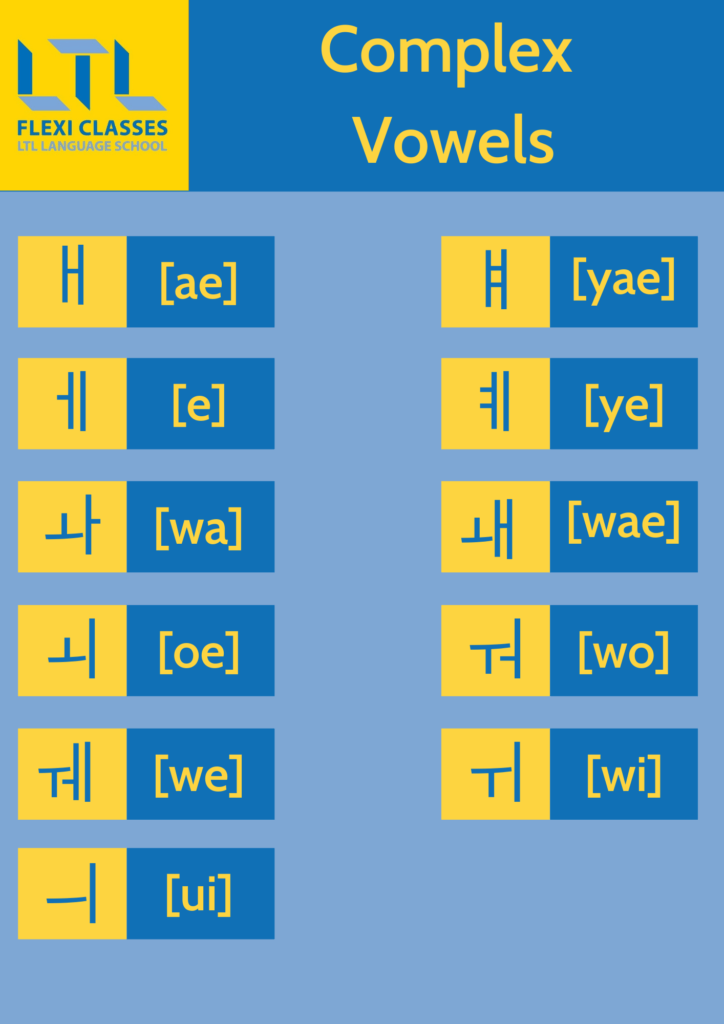
Please note that these are only the English approximations of these sounds.
Korean and English are vastly different languages, using different ranges of sounds, and it’s always best to listen to a Korean native speaker or expert pronounce them.
You may have noticed that some of these double vowels make the same sound.
For example, ㅐ and ㅔ both make the “eh” sound, and ㅒ and ㅖ make the “yeh” sound.
Then there’s that trio of ㅚ , ㅙ , and ㅞ , which all make the “weh” sound.
While these double vowels once had unique sounds, over time they evolved to sound the same.
Technically speaking, they still retain subtle differences, but even native Korean speakers ignore these technicalities and pronounce them in a similar manner.
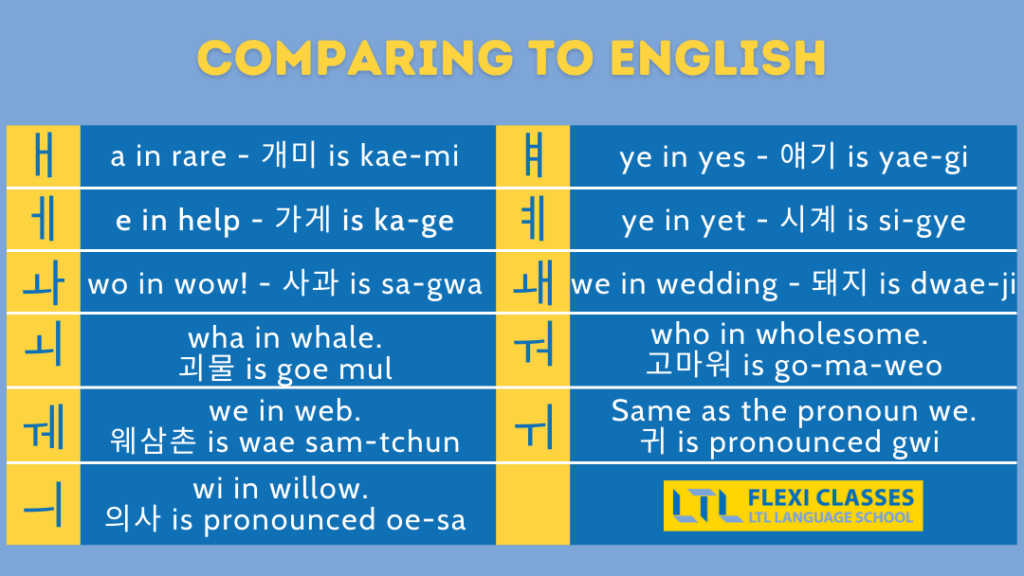
How to Pronounce Korean Double Consonants
Double consonants are another major difficulty for Korean language learners.
In Korean, five of the regular consonants can be modified to make a different sound.
Here are the modifications:
- ㄱ (g) = ㄲ (gg)
- ㄷ (d) = ㄸ (dd)
- ㅂ (b) = ㅃ (bb)
- ㅅ (s) = ㅆ(ss)
- ㅈ (j) = ㅉ (jj)
As you can see, the regular constants are literally doubled up.
This indicates that the regular consonants are pronounced in a tenser, harder way, and is slightly dragged out at the end. This difference can be hard to distinguish, let alone articulate.
Here are a few tips on how to properly pronounce the Korean double consonants.
- ㄲ – a hard “g” that almost sounds almost like a “k”
- ㄸ – a hard “d” that almost sounds almost like a “t”
- ㅃ – a hard “b” that almost sound like a “p”
- ㅆ – a hard “s” almost sounds like a hiss
- ㅉ – a hard “j” that almost sounds like a “ch”
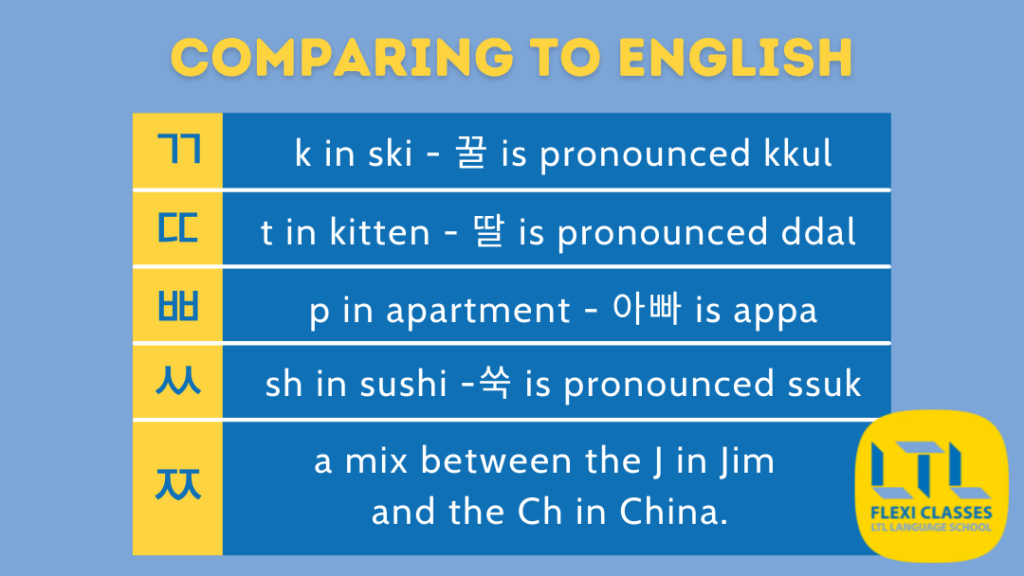
Re-syllabification in Korean Pronunciation
Re-syllabification may sound like a complicated concept, but it’s actually very simple.
Re-syllabification is when a consonant sound is taken from its original character and attached to a new one.
Basically, a consonant is moved over to the next character block.
In Korean, re-syllabication happens when a character that ends in a consonant at the bottom (also known as a batchim) is followed directly by a character that starts with a vowel.
The bottom consonant of the first character is carried over to the next character, replacing the vowel as the starting sound.
Still sounds difficult?
Check out the following examples to see it in practice:
-
작은
– The 작 is jak, and the 은 is eun. Normally, this would be pronounced jak-eun. However, with the re-syllabication rule, the ending consonant of the first character (ㄱ/k) is carried over to the beginning of the next character.
- So an accurate pronunciation of this would be 자근, or ja-keun.
-
같은
– The 같 is gat, and the 은 is eun, so this word would normally be pronounced gat-eun. But similarly to the example above, the ending consonant of the first character (ㅌ/t) is carried over to the beginning of the next.
- So 같은 should be pronounced 가튼, or ga-teun.
-
어린이
– In this word, the re-syllabification happens in the middle. 어린이 looks like it should be pronounced eo-rin-ee. But the second character 린 (rin) is followed directly by a vowel sound 이 (ee) in the third character. So we remove the ending consonant in 린 (rin), which is the ㄴ/n at the bottom, and carry that sound over to the next character.
- So the proper pronunciation of 어린이 would be 어리니, or eo-ri-nee.
Re-syllabification is meant to help certain words flow smoother and faster.
A good speaker in Korean is supposed to have good re-syllabification skills, with no hesitation in applying it in speech.
Next time you’re reading or speaking in Korean, keep this rule in mind, and try to practice it out!
Syllable-Final Closure (Unrelease) in Korean Pronunciation
There’s a rule in Korean – if a word ends in a consonant, then it must end on a hard note.
That means the mouth must be closed shut, and no air should be released.

Here, we run into a problem. Some Korean consonants are clearly pronounced with the mouth open, or with air released.
That means these consonants must be pronounced differently when they are placed at the end of a word.
Thus, the following consonants are changed to the following sounds:
- ㅍ = ㅂ
- ㅋ, ㄲ = ㄱ
- ㅌ, ㅅ, ㅆ, ㅈ, ㅊ = ㄷ
For example, take the Korean word for “clothes,” which is 옷 .
The ending consonant ㅅ is usually pronounced as an s sound. But in this instance, it occurs at the end of the word, so it is pronounced as a ㄷ instead, which is a hard d sound.
So 옷 is pronounced as 옫 .
Korean Consonant Combinations that Change Pronunciation
In Korean, there are consonants that combine to form new sounds. Also called “Combination Sounds”.
When a character ends in a consonant at the bottom (also known as a batchim), and the next character begins with a consonant, then both these consonants merge into a new sound.
RULE #1 – Consonants followed by ㅁ or ㄴ
When certain consonants (ㅂ, ㅍ, ㄱ, ㄲ, ㅋ ㄷ, ㅌ, ㅅ, ㅆ, ㅈ, ㅊ, ㅎ) are followed by a ㅁ or ㄴ, their pronunciations are changed accordingly:
- ㅂ + ㅁ/ㄴ = ㅁ
- ㅍ + ㅁ/ㄴ = ㅁ
- ㄱ + ㅁ/ㄴ = ㅇ
- ㄲ + ㅁ/ㄴ = ㅇ
- ㅋ + ㅁ/ㄴ = ㅇ
- ㄷ + ㅁ/ㄴ = ㄴ
- ㅌ + ㅁ/ㄴ = ㄴ
- ㅅ + ㅁ/ㄴ = ㄴ
- ㅆ + ㅁ/ㄴ = ㄴ
- ㅈ + ㅁ/ㄴ = ㄴ
- ㅊ + ㅁ/ㄴ = ㄴ
- ㅎ + ㅁ/ㄴ = ㄴ
As an example, let’s take the Korean word for “front door,” which is 앞문 .
The first part ends with a ㅍ, which is usually pronounced as a p sound. However, since the following consonant is a ㅁ, the ㅍ in the first character changes its pronunciation to a ㅁ sound.
So the proper pronunciation for the word 앞문 (ap-mun) is actually 암문 (am-mun).
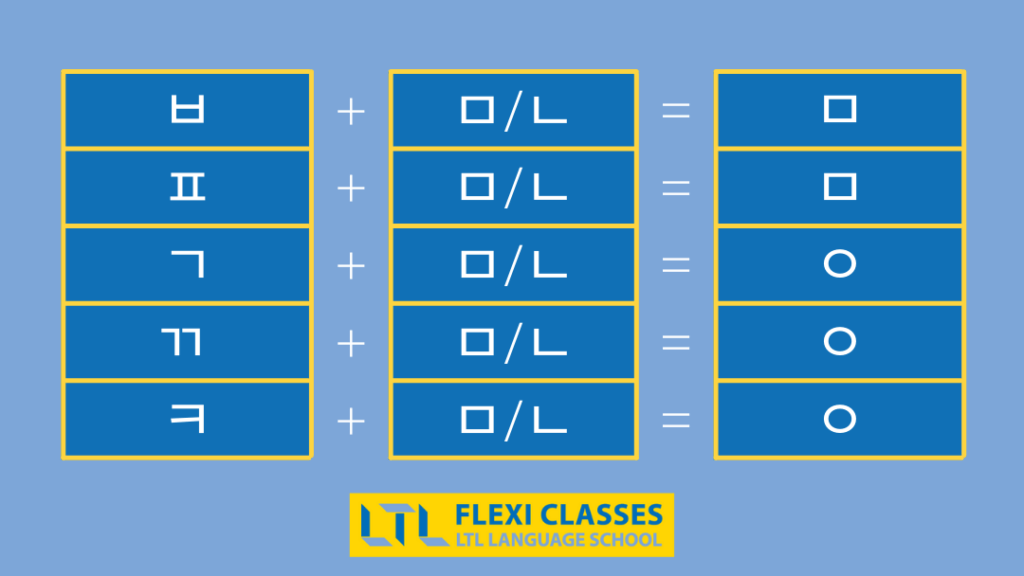
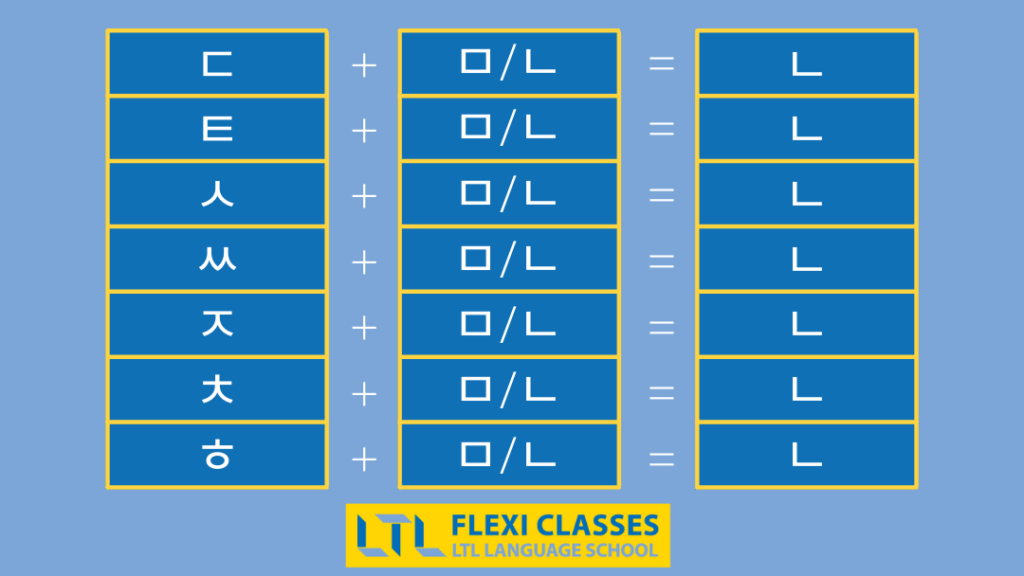
RULE #2 – Consonants preceded or followed by a ㅎ
When certain consonants (ㅂ, ㄷ, ㅈ, ㄱ) are preceded or followed by a ㅎ, their pronunciations are changed accordingly:
- ㅎ + ㅂ = ㅍ
- ㅂ + ㅎ = ㅍ
- ㅎ + ㅈ = ㅊ
- ㅈ + ㅎ = ㅊ
- ㅎ + ㄷ = ㅌ
- ㄷ + ㅎ = ㅌ
- ㅎ +ㄱ = ㅋ
- ㄱ + ㅎ = ㅋ
For example, let’s take the Korean word 놓다 , which means “to put.”
The first character ends with a ㅎ, which is generally pronounced as an h sound. However, the following character starts with a ㄷ. According to the chart above, that means both consonants combine to form a ㅌ, or t sound.
So the word 놓다 (noh-dah) is actually pronounced 노타 (no-tah).
Lastly, when ㄹ and ㄴ come together, the ㄴ is pronounced as an ㄹ.
- ㄹ + ㄴ = ㄹ
- ㄴ + ㄹ = ㄹ
For example, let’s consider the Korean word 인류 , which means the human race.
The first character ends in a ㄴ, which normally makes the n sound. However, since it is followed directly by a ㄹ in the next character, it is changed to a similar ㄹ sound.
Thus, 인류 (in-ryu) is actually pronounced 일류 (ir-ryu).
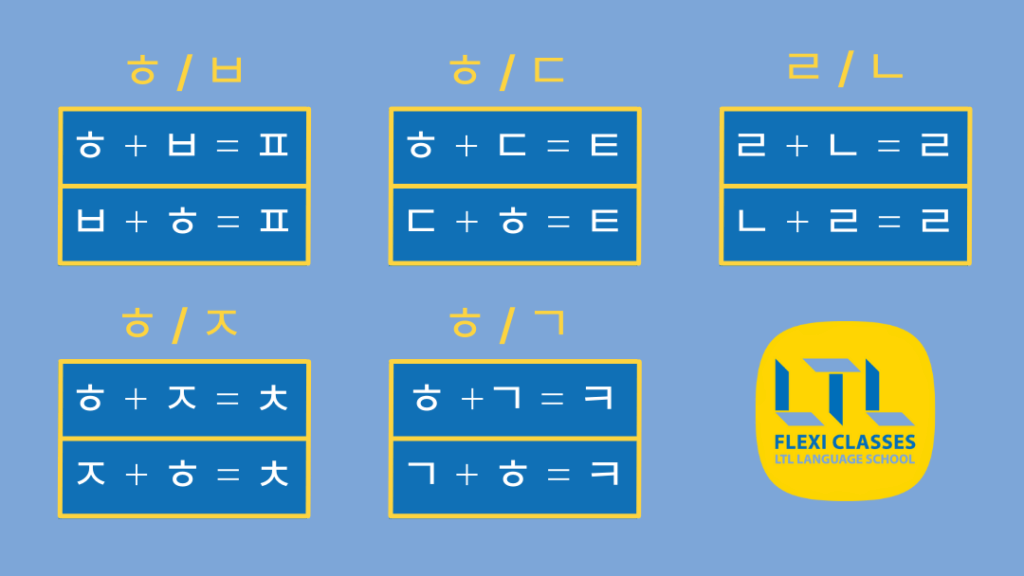
How to Get Better at Korean Pronunciation
The only way to get better at Korean pronunciation is to practice.
We’ve shared several basic rules and tips on proper pronunciation, but that doesn’t mean anything unless you actually practice speaking.
Because there are so many rules in Korean pronunciation, you’re bound to make mistakes and gaffes along the way.
And that’s perfectly fine – what’s important is that you’re always getting better.
Find a native Korean speaker as a language exchange partner, or take Korean language lessons with a qualified teacher.
The more you practice speaking, the more naturally it will come to you, and soon you’ll be able to do it effortlessly!
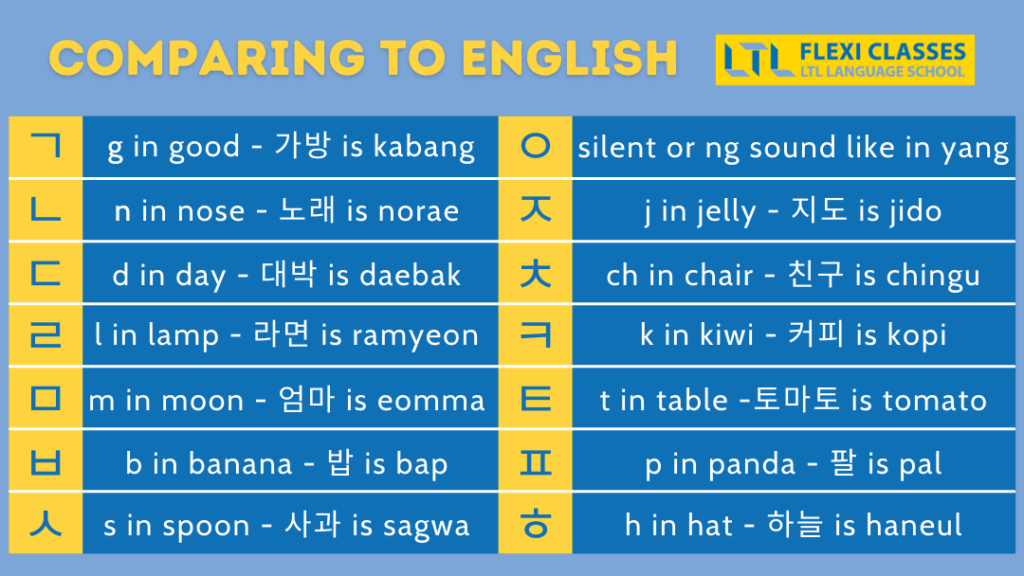
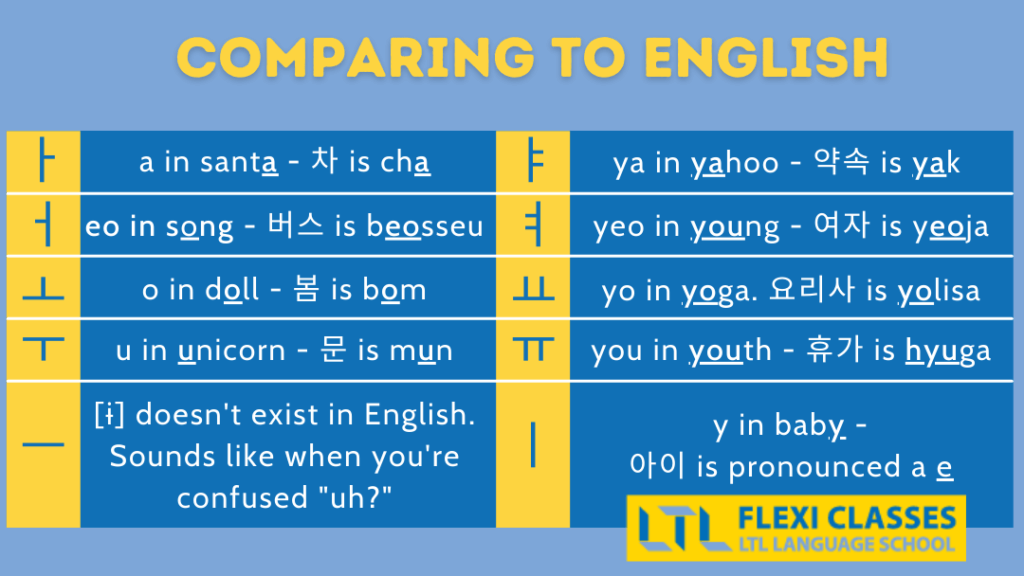
Like what you read? How about you check out some other resources we’ve provided for learning other languages as well?
- Discover our beginners guide to verb conjugation in Japanese
- Learn basic Vietnamese with these usual phrases for tourists
- Check out our very own Chinese pronunciation tool to practice your Mandarin
KOREAN PRONUNCIATION – FAQ’s
Is Korean pronunciation difficult to master?
Just like with any new language, you need to take the time to properly learn how to pronounce words and know about the pronunciation of Korean rules.
If you learn these rules from the beginning, your learning journey will be a lot smoother as you won’t have to “unlearn” any bad pronunciation habits.
Take your time, focus on your pronunciation during your first lessons, and keep practising! Only time can make things easier.
What are Korean double vowels?
Double vowels – also known as diphthongs – are complex vowels that are formed when two basic vowels are combined.
Korean has eleven double vowels:
ㅐ (ae)
ㅔ (e)
ㅒ (yae)
ㅖ (ye)
ㅢ (ui)
ㅟ (wi)
ㅘ (wa)
ㅝ (wo)
ㅚ (oe)
ㅙ (wae)
ㅞ (we)
I have a hard time with Korean double consonants, can you help?
Double consonants are another major difficulty for Korean language learners.
The regular constants are literally doubled up. This indicates that the regular consonants are pronounced in a tenser, harder way, and is slightly dragged out at the end.
Here are a few tips on how to properly pronounce the Korean double consonants.
ㄲ – a hard “g” that almost sounds almost like a “k”
ㄸ – a hard “d” that almost sounds almost like a “t”
ㅃ – a hard “b” that almost sound like a “p”
ㅆ – a hard “s” almost sounds like a hiss
ㅉ – a hard “j” that almost sounds like a “ch”
What are combination sounds in Korean?
In Korean, there are consonants that combine to form new sounds.
When a character ends in a consonant at the bottom (also known as a batchim), and the next character begins with a consonant, then both these consonants merge into a new sound.
When certain consonants (ㅂ, ㅍ, ㄱ, ㄲ, ㅋ ㄷ, ㅌ, ㅅ, ㅆ, ㅈ, ㅊ, ㅎ) are followed by a ㅁ or ㄴ, their pronunciations are changed accordingly:
ㅂ + ㅁ/ㄴ = ㅁ
ㅍ + ㅁ/ㄴ = ㅁ
ㄱ + ㅁ/ㄴ = ㅇ
ㄲ + ㅁ/ㄴ = ㅇ
ㅋ + ㅁ/ㄴ = ㅇ
ㄷ + ㅁ/ㄴ = ㄴ
ㅌ + ㅁ/ㄴ = ㄴ
ㅅ + ㅁ/ㄴ = ㄴ
ㅆ + ㅁ/ㄴ = ㄴ
ㅈ + ㅁ/ㄴ = ㄴ
ㅊ + ㅁ/ㄴ = ㄴ
ㅎ + ㅁ/ㄴ = ㄴ
When certain consonants (ㅂ, ㄷ, ㅈ, ㄱ) are preceded or followed by a ㅎ, their pronunciations are changed accordingly:
ㅎ + ㅂ = ㅍ
ㅂ + ㅎ = ㅍ
ㅎ + ㅈ = ㅊ
ㅈ + ㅎ = ㅊ
ㅎ + ㄷ = ㅌ
ㄷ + ㅎ = ㅌ
ㅎ +ㄱ = ㅋ
ㄱ + ㅎ = ㅋ
Lastly, when ㄹ and ㄴ come together, the ㄴ is pronounced as an ㄹ.
ㄹ + ㄴ = ㄹ
ㄴ + ㄹ = ㄹ
Want More From LTL?
FANCY LEARNING KOREAN? Check out our online Korean courses here.
We offer a 7-day free trial to all online students where you can study Korean 24/7.
Want to study Korean in Korea instead? Our Korean courses in Seoul can either be taken in small groups of no more than 5 students or individually for a more tailored experience.
We even offer incredible homestay experiences in Seoul too.
To top it all off, it certainly doesn’t end with Korean. Check out the other languages we teach 👇🏻










6 comments
I find this really hard as the romanisation and sounds rarely match, hope I can improve
You'll get there, come take some Flexi Classes Mari, it'll definitely help - https://flexiclasses.com/korean-online/
Love this, it is tricky at the start because I never know whether to use g or k for example!
Practice makes perfect Matt. Focus on the Hangul rather than the romanization!
It is hard to start with but keep at it, if I can do it, anyone can!!
Haha, well said Ed!